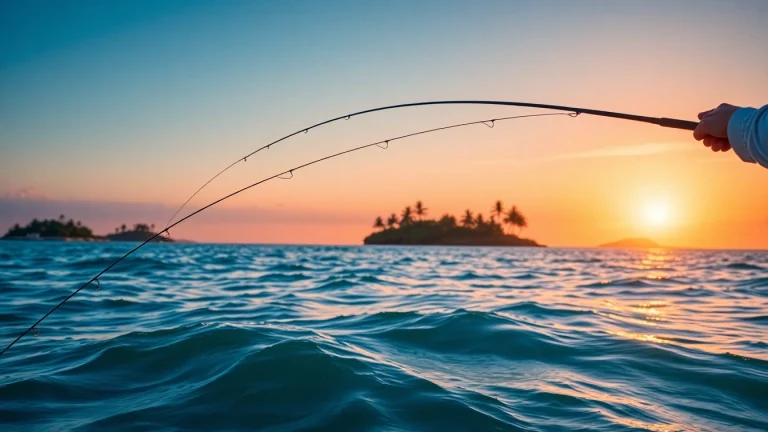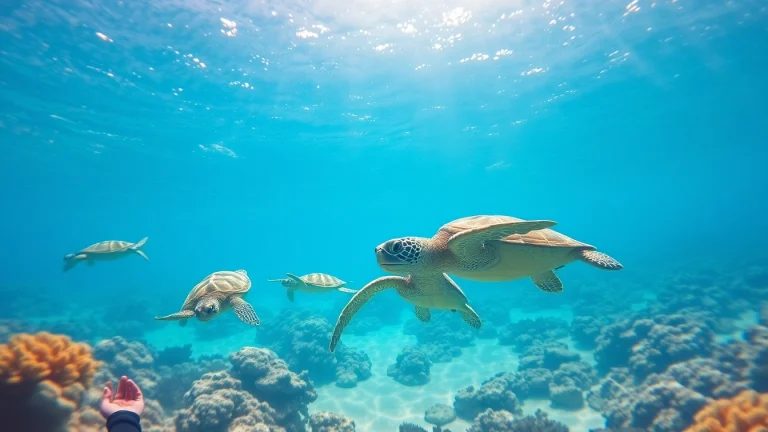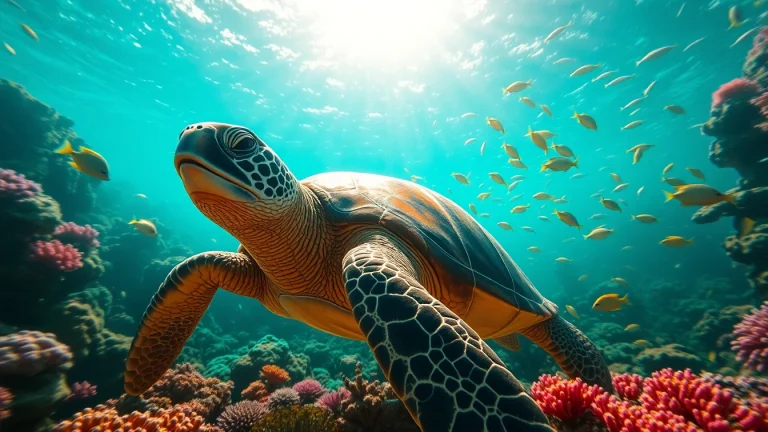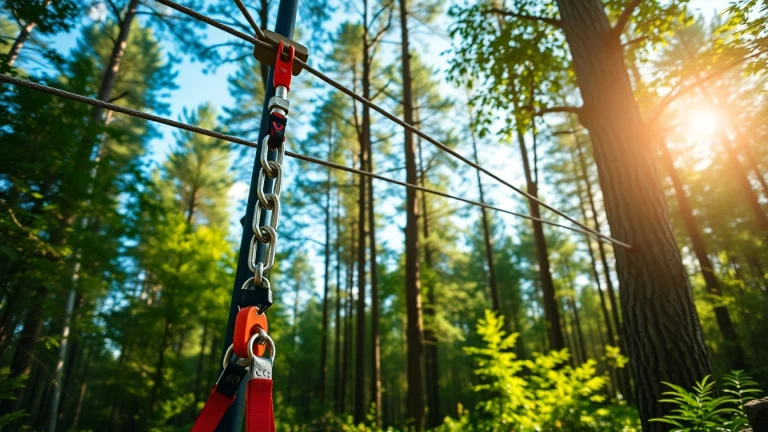
Mastering Saltwater Fly Fishing: Techniques, Gear, and Top Destinations
Introduction to Saltwater Fly Fishing
Saltwater fly fishing is a captivating blend of art and technique, enticing anglers with its promise of excitement and connection to nature. It casts a wide net of opportunities across sun-soaked shores, where fishermen can pursue a variety of game fish in stunning coastal environments. Whether you are an aspiring beginner or an experienced angler, there’s much to discover and learn in this thrilling discipline. To embark on your saltwater fly fishing journey, you must understand the basics, equip yourself with the essential gear, and embrace the unique appeals that make this sport so treasured. For those looking to dive into the depths of adventure, saltwater fly fishing is calling.
Understanding the Basics
At its core, saltwater fly fishing involves using artificial flies—typically crafted from feathers, fur, and synthetic materials—to catch fish in oceanic and brackish waters. Compared to freshwater fishing, saltwater fly fishing requires different techniques and equipment. The saltwater environment presents its own set of challenges, from stronger tides to larger fish species. Familiarizing yourself with these foundational elements is crucial as you prepare to navigate the waters.
Essential Gear for Beginners
Choosing the right gear can significantly impact your success and enjoyment in saltwater fly fishing. Key components include:
- Fly Rod: Typically, a 7- to 12-weight rod is preferred for saltwater, as it provides the strength needed to handle larger species. Look for rods that are durable and capable of managing wind resistance.
- Fly Reel: Saltwater reels require corrosion resistance and a sturdy drag system to fight powerful fish. It’s crucial that they can withstand exposure to saltwater environments.
- Line and Leader: Use a floating or sinking line based on your fishing style. Fluorocarbon leaders rated between 15- to 30-pound test are popular choices for saltwater, as they provide invisibility underwater and toughness against abrasions.
- Flies: The selection of flies can vary based on local species. A versatile box might include baitfish patterns, crustaceans, and topwater poppers for targeting species like tarpon, bonefish, and permit.
The Appeal of Saltwater Fishing
The appeal of saltwater fly fishing extends beyond merely catching fish. Anglers often cite the stunning scenery, the thrill of the chase, and the connection to marine environments as key motivators. Fishing in dynamic settings, such as coral reefs or tidal flats, allows for immersive experiences that can rejuvenate the spirit. Furthermore, saltwater fly fishing encourages environmental awareness as anglers become custodians of the oceans and advocates for sustainable practices.
Techniques for Successful Saltwater Fly Fishing
Casting Techniques and Tips
Effective casting is one of the cornerstones of successful saltwater fly fishing. Techniques may differ from traditional freshwater casting due to the presence of wind and the need for longer, precise casts. Here are some techniques and tips to enhance your casting:
- Double Haul: This technique involves using both hands to increase line speed and distance, essential for dealing with challenging winds.
- Targeting Fish: Identify where fish are likely to be and practice casting to these targets, aiming to land the fly delicately without spooking the fish.
- Practice: Regular practice on both land and water helps refine your skills. Using various casting distances prepares you for the range you may encounter on the water.
Choosing the Right Flies
The right flies can make a world of difference when saltwater fly fishing. Key factors to consider include:
- Local Species: Prior to your trip, research the species prevalent in your target area and the flies they respond to. This ensures your tackle is matched to the local conditions.
- Time of Year: Fish behaviors and preferences shift with seasonal patterns. Changes in water temperature, tides, and prey availability influence which flies might be successful.
- Fly Construction: Flies that mimic local baitfish or crustaceans often perform well. Consider purchasing a variety of patterns, particularly those that are proven to be effective in your chosen location.
Strategies for Different Conditions
Fishing conditions can change rapidly in saltwater environments. Here are strategies for adapting your approach:
- Windy Days: On windy days, opt for heavier flies and a shorter, more powerful cast to maintain control.
- Tidal Conditions: Fish tend to move with the tides. Understand the tide cycles and target your fishing during the prime times, usually around high tide or when outgoing tides create moving water.
- Weather Patterns: Overcast days can lead to great fishing, as fish become more active and willing to chase after flies. Conversely, bright sunny days may require stealth and lighter presentations.
Popular Destinations for Saltwater Fly Fishing
Top Coastal Locations in the US
The United States is home to a treasure trove of saltwater fly fishing destinations that attract anglers from all over. Some of the most popular locations include:
- Florida Keys: Famous for its diverse species such as tarpon, bonefish, and permit, the Keys offer a myriad of flats accessible to fly fishermen.
- Outer Banks, North Carolina: Known for its varied fishing opportunities, including redfish and striped bass, the Outer Banks provide both inshore and offshore options.
- California Coast: Coastal spots, including San Diego and San Francisco, present unique challenges and rewards for anglers targeting species like surfperch and halibut.
International Saltwater Fishing Spots
For those looking to broaden their horizons beyond the domestic shores, there are numerous international saltwater fly fishing destinations that beckon the adventurous spirit:
- Belize: Renowned for its incredible bonefishing, this tropical paradise offers stunning blue waters and abundant fish.
- Bahamas: With its pristine flats and rich marine environment, the Bahamas is a mecca for saltwater invaders seeking bonefish, permit, and tarpon.
- Australia’s Great Barrier Reef: Home to an unparalleled biodiversity, the reef invites anglers to chase after unique species while enjoying breathtaking scenery.
Evaluating Accessibility and Cost
When planning a fishing trip, consider the accessibility and cost factors involved. Some destinations are easier to reach with direct flights and reasonable accommodations, while others might require more commitment and expense. Budgeting for travel, lodgings, guiding services, and tackle can ensure an enjoyable fishing experience without breaking the bank.
Challenges in Saltwater Fly Fishing
Weather and Environmental Factors
Saltwater fly fishing is intertwined with numerous environmental factors, and weather conditions can create unique challenges for anglers. Sudden changes in wind, rain, and temperature may affect fish activity and feeding patterns. Understanding how to adapt to these shifts—such as altering casting techniques, repositioning during storms, or choosing different flies—can enhance your success on the water.
Managing Tides and Currents
One of the most crucial skills in saltwater fly fishing is learning to manage tides and currents. Tides significantly influence fish behavior, often dictating when and where fish will feed. Absorbing this knowledge includes:
- Keeping track of local tide schedules to determine the best fishing windows.
- Fishing during the peak of moving water, as fish tend to be most active during these times.
- Learning to read the water to identify areas where fish might congregate, such as drop-offs and eddies created by strong currents.
Dealing with Equipment Wear
The saltwater environment can be demanding on fishing gear, leading to faster wear and degradation. Implementing preventative maintenance can prolong the life of your equipment:
- Rinse your gear with fresh water after each use to remove salt and prevent corrosion.
- Inspect your lines, leaders, and knots regularly, replacing any damaged sections before heading out again.
- Store your gear properly, avoiding direct sunlight and dampness to minimize wear down.
Resources for Aspiring Saltwater Fly Fishers
Recommended Books and Guides
For further learning and skill enhancement, a wealth of literature and guides exist to help keen fly fishers immerse themselves in saltwater practices. Some highly regarded titles include:
- “Saltwater Fly Fishing” by Bob Popovics – A comprehensive guide focusing on techniques and strategies specifically for saltwater species.
- “The Orvis Guide to Saltwater Fly Fishing” by Kirk Deeter – A helpful manual detailing fundamental tactics, gear selection, and essential flies for various conditions.
- “Fly Fishing the Saltwater Shore” by Ralph E. Cutter – This book explores the nuances of fishing from the shore, providing useful insights into surf fishing techniques.
Online Communities and Forums
The online fly fishing community is thriving, with forums and discussion platforms where anglers can exchange knowledge, tips, and experiences. Joining these communities can provide access to valuable insights and peer support, such as:
- Reddit’s r/FlyFishing: A warm and welcoming forum where newcomers can seek advice and insights from seasoned enthusiasts.
- Facebook Groups: Numerous fly fishing groups cater to specific interests, such as saltwater fishing, where members share experiences, local conditions, and upcoming events.
Tips for Finding Local Experts
Connecting with local experts like guides and seasoned anglers can greatly enhance your saltwater fly fishing experience. Local professionals often have extensive knowledge about specific fishing spots, techniques, and conditions. Some strategies for finding knowledgeable experts include:
- Visiting local fly shops or tackle stores to inquire about guided trips and recommendations.
- Attending fishing expos or seminars where professionals share insights and tips about the best practices in saltwater fly fishing.
- Networking with other anglers, whether online or in-person, to gain referrals to trusted guides and experts.


